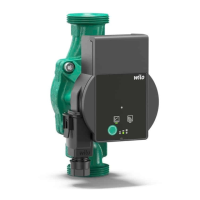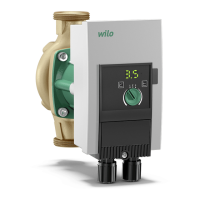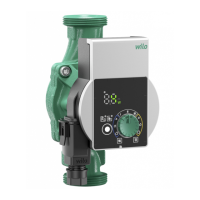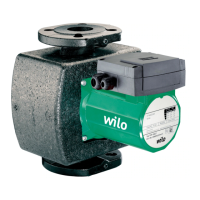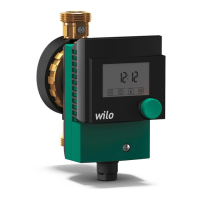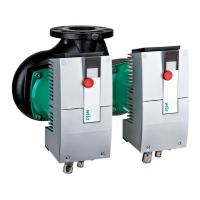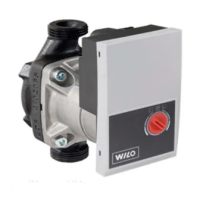Shutdown en
Installation and operating instructions Wilo-Atmos GIGA-N 27
7.5 Switching frequency
CAUTION
Risk of property damage!
The pump or motors may be damaged by incorrect switching.
• Only switch on the pump again when the motor is at a complete standstill.
A maximum of 6connections per hour are permitted in accordance with IEC60034-1. It
is recommended that repeated activations occur at regular intervals.
8 Shutdown
8.1 Switching off the pump and tem-
porary shutdown
CAUTION
Risk of property damage due to overheating!
Hot fluids can damage the pump seals when the pump is at a standstill.
After deactivating the heat source:
• Allow the pump to run until the fluid temperature has dropped to an appropriate
level.
CAUTION
Risk of property damage due to frost!
If there is a danger of frost:
• Drain the pump completely to avoid damage.
▪Close the shut-off device in the pressure pipe. If a non-return valve is installed in the
pressure pipe, and there is counter pressure, the shut-off device can remain open.
▪Do not close the shut-off device in the suction line.
▪Switch off the motor.
▪If there is no danger of frost, make sure the fluid level is sufficient.
▪Operate the pump every month for 5minutes. Doing this prevents deposits from occur-
ring in the pump compartment.
8.2 Shutdown and storage
WARNING
Risk of injury and damage to property!
• Dispose off the pump contents and rinsing fluid by taking the legal regulations
into account.
• Always wear protective clothing, protective gloves and protective goggles when
working.
▪Clean the pump thoroughly prior to storage!
▪Drain the pump completely and rinse thoroughly.
▪The remaining fluid and rinsing fluid should be drained, collected and disposed off via
the drain plug. Observe local regulations along with the notes under “Disposal”!
▪Spray the interior of the pump with a preservative through the suction and discharge
ports.
▪Close the suction and discharge ports with caps.
▪Grease or oil the blank components. For this, use silicone-free grease or oil. Observe the
manufacturer’s instructions for preservatives.
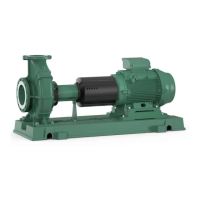
